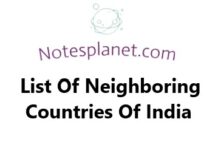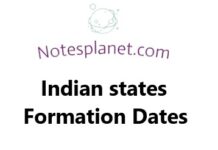Solar System
Solar System: The four internal earthbound planets are Mercury, Venus, Earth, and Mars, all of which comprise principally of rock. Jupiter, Saturn, Neptune, and Uranus are the four outer planets. These huge planets are mostly made of gases or ice. Pluto was viewed as the 10th planet until 2006, when the Global Cosmic Association casted a ballot to characterize Pluto as a bantam planet all things being equal.
Solar System Planets

| S.No. | Planets Name |
| 1. | Mercury |
| 2. | Venus |
| 3. | Earth |
| 4. | Mars |
| 5. | Jupiter |
| 6. | Saturn |
| 7. | Uranus |
| 8. | Neptune |
- Mercury
Although Mercury is the smallest planet in our solar system, it has the greatest temperature variation of any planet, ranging from over 800 degrees Fahrenheit (430 degrees Celsius) during the day to minus 290 degrees Fahrenheit (180 degrees Celsius) at night. its temperatures are the highest of any planet.
2. Venus
Venus is the most sizzling planet in our nearby planet group, with surface temperatures that can arrive at up to 864 degrees Fahrenheit (462 degrees Celsius). That is sufficiently hot to melt lead.
3. Earth
Earth is the main planet in our planetary group known to have life on it. Scientists have yet to discover any evidence of life elsewhere in the universe.
4. Mars
Mars is known as the Red Planet since it has a ton of iron oxide, or rust, on its surface. As a result, it has a reddish hue.
5. Jupiter
There are 79 moons orbiting Jupiter, the largest planet in our solar system! That is a greater number of moons than some other planet.
6. Saturn
From tiny grains to boulders the size of a house, millions of ice particles make up Saturn’s rings.
7. Uranus
Uranus is shifted on its side, and that implies it pivots on its side as it circles the Sun. This makes its seasons very odd.
8. Neptune
Neptune is the uttermost planet from the Sun, and it’s up until this point away that it takes just about 165 Earth a long time to finish one circle around the Sun.
Origin of the solar system
As the amount of data on the planets, comets, moons, and asteroids has grown, so too have the issues faced by astronomers in forming theories of the origin of the solar system. Theories about where Earth came from and what you can see in the sky certainly didn’t have as many facts to work with in the ancient world. For sure, a logical way to deal with the beginning of the nearby planet group became conceivable solely after the distribution of Isaac Newton’s laws of movement and attractive energy in 1687.
Scientists struggled for many years to apply Newton’s laws to explain the apparent motions of planets, comets, moons, and asteroids even after this breakthrough. In 1734 Swedish rationalist Emanuel Swedenborg proposed a model for the planetary group’s starting point in which a shell of material around the Sun broke into little pieces that framed the planets. Immanuel Kant, a German philosopher, developed the concept in 1755 that the solar system emerged from a primordial nebula.
orbit
The planets and other huge articles in circle around the Sun lie close to the plane of Earth’s circle, known as the ecliptic. Smaller icy objects like comets frequently orbit at significantly greater angles to this plane. A considerable lot of the biggest normal satellites are in coordinated pivot, with one face forever moved in the direction of their parent. The four goliath planets have planetary rings, flimsy groups of little particles that circle them in unison.
Because of the development of the Planetary group, planets and most different articles circle the Sun in the very heading that the Sun is turning. The majority of the large moons circle their planets in prograde heading, matching the planetary pivot; The largest object to orbit in the opposite, retrograde manner is Triton, the moon of Neptune. Most larger objects rotate around their own axes in the prograde direction relative to their orbit, but Venus rotates in the reverse direction.
what is solar system?
The The biggest of such items are the eight planets, all together from the Sun: four earthly planets named Mercury, Venus, Earth and Mars, two gas monsters named Jupiter and Saturn, and two ice goliaths named Uranus and Neptune.
Important Links
Facebook: Notesplanet
Instagram: Notesplanet1
Tags: solar system for kids, what are the 12 planets, solar system model, all planets, mercury (planet), how many planets are there











